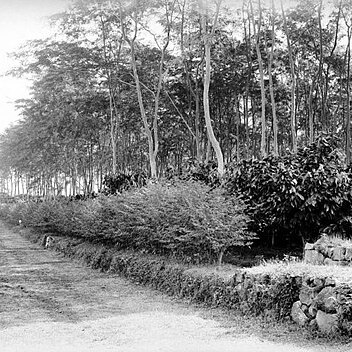Shrubs. Stipules triangular-spiculiform, free, not spurred, slightly connate at base, persistent. Leaves subfasciculate on short lateral branches, imparipinnate; leaflets alternate, subsessile. Inflorescences sparse racemes or reduced to 1 or 2 flowers on lateral shoots; bracts paired, persistent. Flowers large. Bracteoles similar to bracts. Hypanthium short. Calyx campanulate, membranous, 5-lobed; abaxial 3 lobes lanceolate and ± as long as tube, adaxial 2 lobes triangular and short. Corolla yellow, longer than calyx; standard suborbicular, with 2 appendages at base, without auricles; keels conspicuously inflexed, without a beak. Stamens diadelphous (5+5); anthers uniform. Ovary linear, with many ovules; style filiform, inflexed; stigma terminal, small. Legume a loment (but articulations developing late), linear to oblong, inflated, shortly stipitate, rugose, glabrous or with coarse soft prickles, divided into several articles, indehiscent. Seeds 1 per article.
Leaves often fasciculate on short shoots, 1-foliolate (not in the Flora Zambesiaca area) or more usually imparipinnate; stipules striate, persistent; stipels absent; leaflets usually ± alternate, entire or minutely notched, mostly glabrous and with minute black dots above.
Shrubs or small trees with usually two kinds of indumentum, weak white deciduous hairs and stiffer tubercular-based hairs which are often aromatic and glandular and frequently persist as conical tuberculars on the older stems.
Corolla glabrous or wings and standard pubescent at their apices and margins, often strongly veined; blade of standard forming an angle with the claw and bearing two variable ridges or appendages at the base.
Flowers in axillary racemes or solitary, rarely in panicles; bracts persistent, sometimes tripartite; bracteoles persistent, opposite, at the base or just below the base of the receptacle (hypanthium).
Staminal arrangement various, monadelphous or variously divided, 5 + 5, 1 + 9 or 1 + 4 + 5, sometimes varying in a single specimen; anthers uniform, or less often alternate anthers slightly longer.
Ovary stipitate, 3–9-ovulate, often curving; style curved near its centre with the upper side concave, thin, cylindric, glabrous or sparsely hispid near the base; stigma terminal, minute.
Calyx usually strongly veined; lobes mostly longer than the tube, the lowest the longest, the two upper united for half their length and connivent at the tips.
Seeds flattened, asymmetrically ellipsoid; hilum towards one end, round or elliptic, c. 0.5 mm long, devoid of any appendages.
Pod breaking transversely into 1–6 indehiscent articles.

